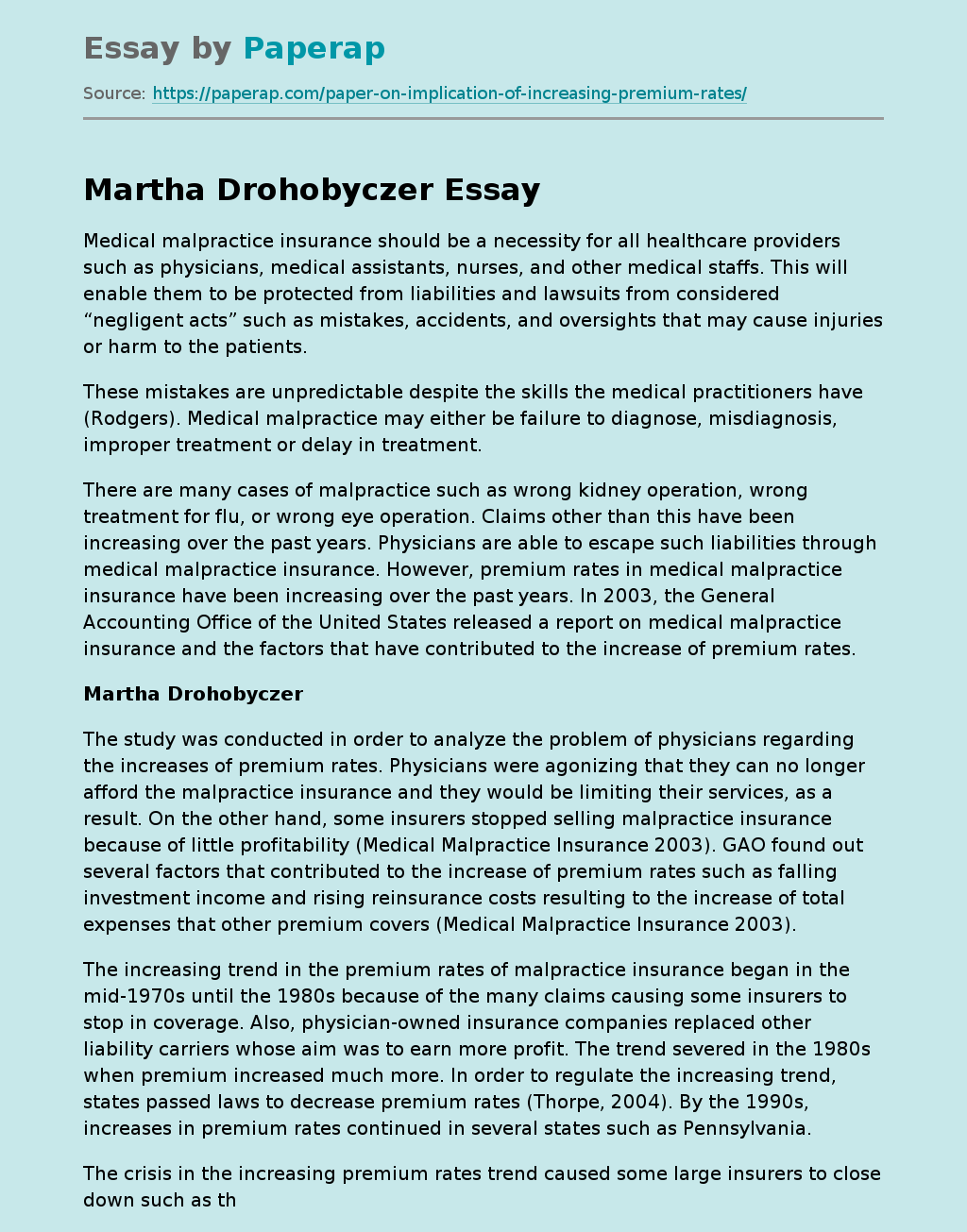Medical Error Insurance
Medical malpractice insurance should be a necessity for all healthcare providers such as physicians, medical assistants, nurses, and other medical staffs. This will enable them to be protected from liabilities and lawsuits from considered “negligent acts” such as mistakes, accidents, and oversights that may cause injuries or harm to the patients.
These mistakes are unpredictable despite the skills the medical practitioners have (Rodgers). Medical malpractice may either be failure to diagnose, misdiagnosis, improper treatment or delay in treatment.
There are many cases of malpractice such as wrong kidney operation, wrong treatment for flu, or wrong eye operation.
Claims other than this have been increasing over the past years. Physicians are able to escape such liabilities through medical malpractice insurance. However, premium rates in medical malpractice insurance have been increasing over the past years. In 2003, the General Accounting Office of the United States released a report on medical malpractice insurance and the factors that have contributed to the increase of premium rates.
The study was conducted in order to analyze the problem of physicians regarding the increases of premium rates. Physicians were agonizing that they can no longer afford the malpractice insurance and they would be limiting their services, as a result. On the other hand, some insurers stopped selling malpractice insurance because of little profitability (Medical Malpractice Insurance 2003).
GAO found out several factors that contributed to the increase of premium rates such as falling investment income and rising reinsurance costs resulting to the increase of total expenses that other premium covers (Medical Malpractice Insurance 2003).
The increasing trend in the premium rates of malpractice insurance began in the mid-1970s until the 1980s because of the many claims causing some insurers to stop in coverage. Also, physician-owned insurance companies replaced other liability carriers whose aim was to earn more profit. The trend severed in the 1980s when premium increased much more. In order to regulate the increasing trend, states passed laws to decrease premium rates (Thorpe, 2004). By the 1990s, increases in premium rates continued in several states such as Pennsylvania.
The crisis in the increasing premium rates trend caused some large insurers to close down such as the St. Paul Companies. Additionally, processing claims by patients may take more than two years thus making it hard for insurers to set premiums (Mello, 2006). Physicians in West Virginia rallied against the high premiums which slowed down the New Jersey and caused closing of heath services temporarily. There were also follow up rallies in Connecticut and other states (Thorpe, 2004). Obstetricians, gynecologist and neurosurgeons are greatly affected by the high premium rates causing some practitioners to stop providing healthcare services.
Medical Error Insurance. (2019, Dec 05). Retrieved from https://paperap.com/paper-on-implication-of-increasing-premium-rates/

